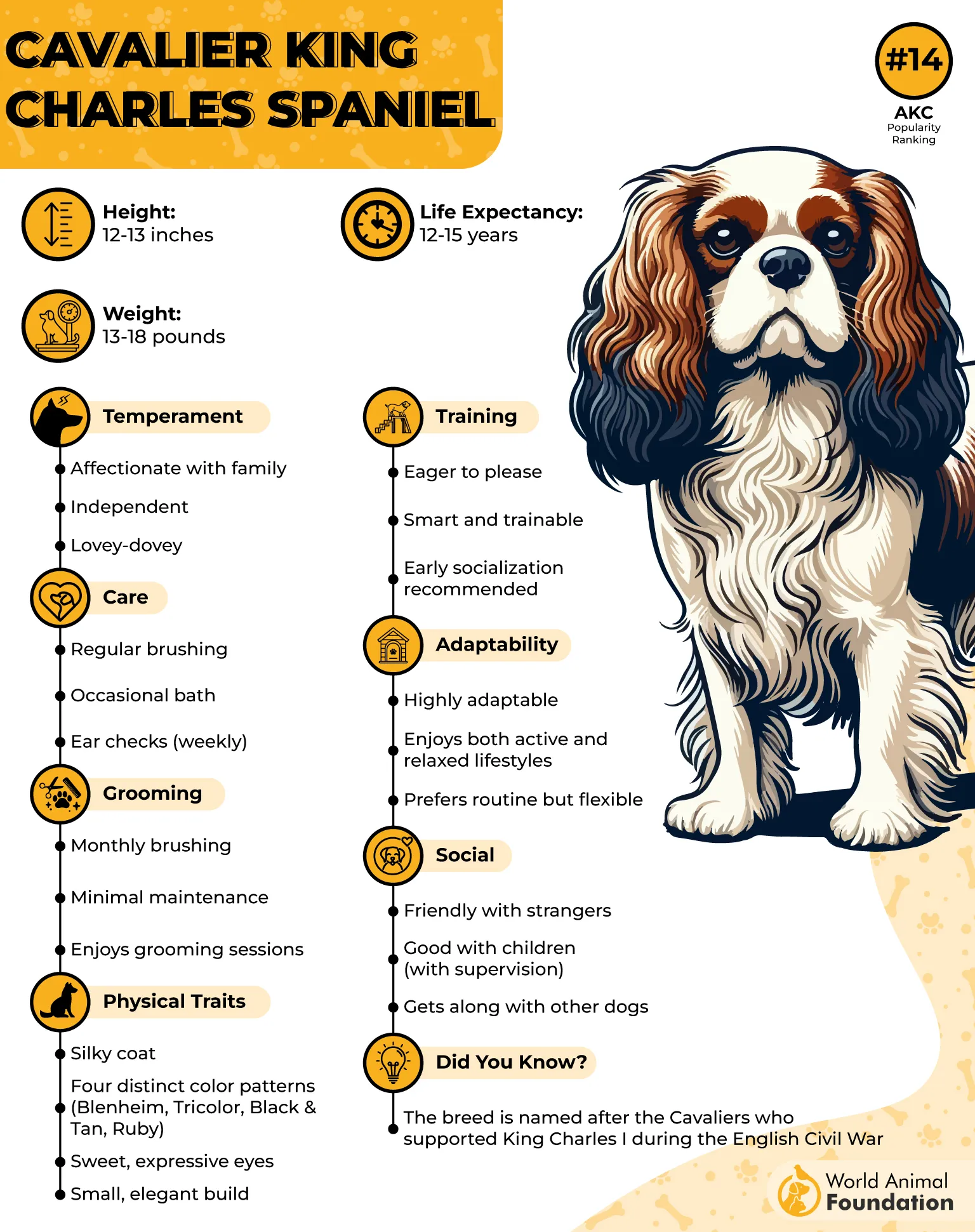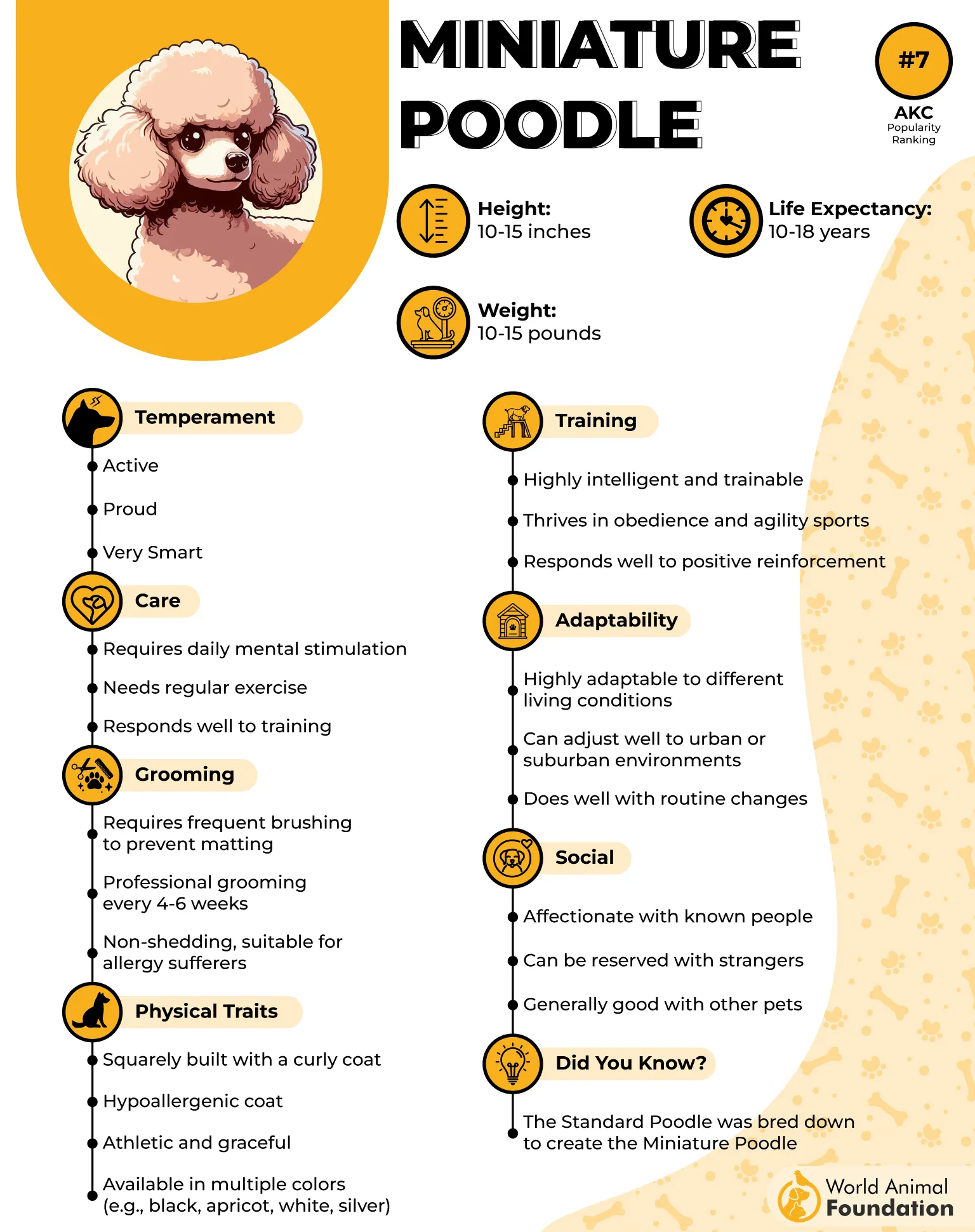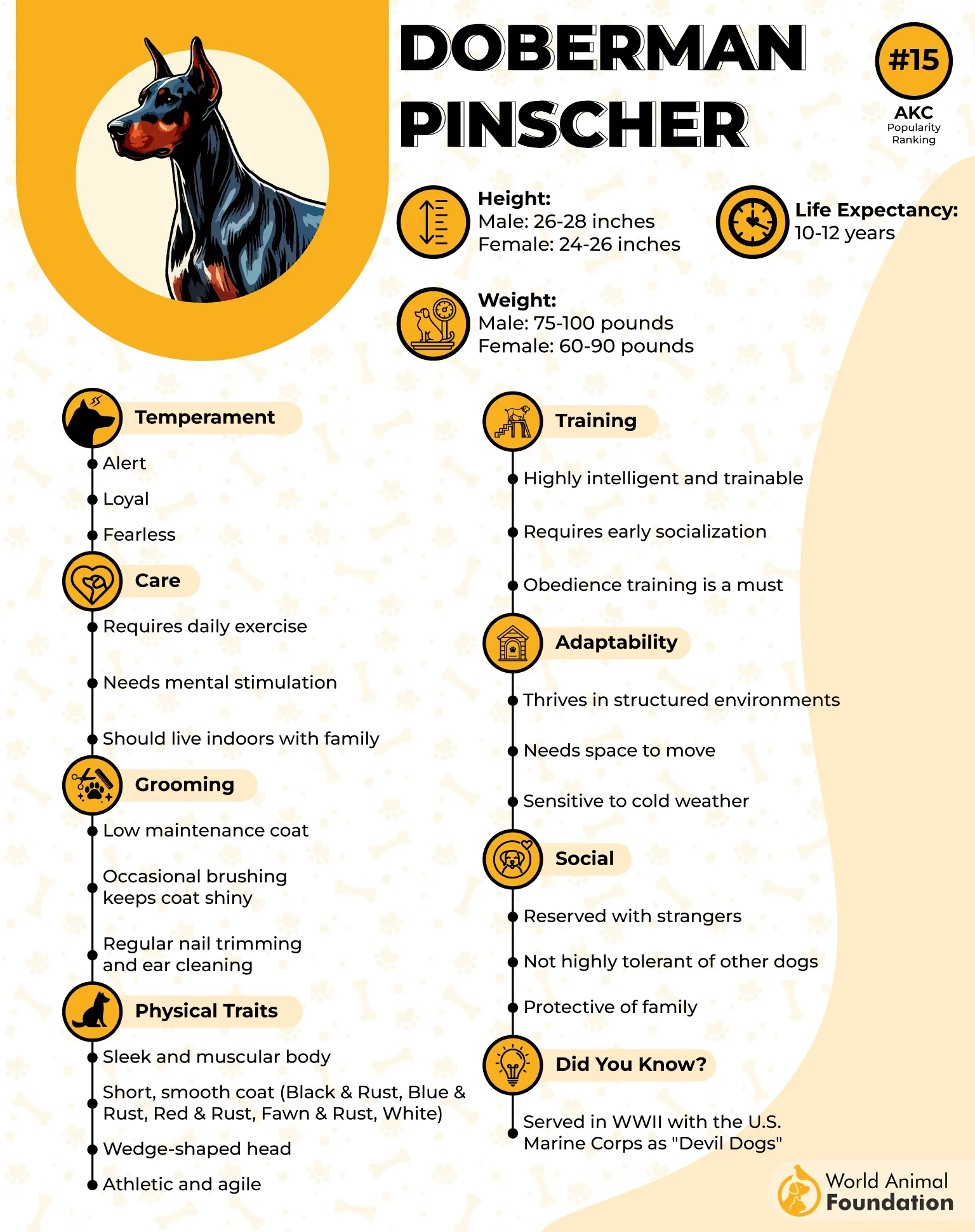Heart health is as important for dogs as it is for people. While many dogs live long, healthy lives, some breeds are more prone to specific heart conditions than others. Knowing the risks can help pet parents take early action, monitor symptoms, and provide the right care.
Heart disease in dogs can be congenital (present at birth) or acquired over time. The two most common types found in dogs are degenerative mitral valve disease (DMVD) and dilated cardiomyopathy (DCM). Small breeds are usually more affected by DMVD, while larger breeds are more often diagnosed with DCM.
Symptoms such as coughing, fainting, low energy, or rapid breathing should never be ignored. These may signal heart trouble, especially in at-risk breeds. With regular veterinary care, early detection, and the right management, many dogs with heart disease can live fulfilling lives.
This article outlines:
Popular dog breeds with heart problems,
The specific heart conditions they may face, and
What pet owners should know about caring for dogs with cardiac issues.
Dog Breeds With Common Heart Conditions
1. Cavalier King Charles Spaniel

According to the AKC, the Cavalier King Charles Spaniel is notably prone to degenerative mitral valve disease (DMVD)—a condition that affects the heart’s ability to pump blood efficiently. By age five, roughly half of all Cavaliers develop a heart murmur. By age ten, nearly all have some form of this condition, which leads to blood leaking backward through the mitral valve into the left atrium.
This inherited disease typically progresses slowly. As the valve thickens and leaks more, the heart enlarges to compensate for poor circulation. While symptoms may not show early on, murmurs are often detected during routine veterinary exams, making annual or biannual checkups vital after age six.

As DMVD advances, it can lead to congestive heart failure. Signs to watch for include reduced stamina, labored breathing, persistent coughing, or fainting. At this stage, a veterinary cardiologist may recommend imaging tests and begin treatment to ease strain on the heart.
There is no cure for DMVD, but medications, low-sodium diets, and close monitoring can help slow progression. Early intervention improves quality of life, particularly in this breed, which is genetically predisposed to heart complications.
Cavalier King Charles Spaniel Highlights
• Highest known incidence of degenerative mitral valve disease (DMVD)
• Early signs include murmurs, coughing, and shortness of breath
• Routine exams and early treatment improve long-term outlook
2. Miniature Poodle

Miniature and Toy Poodles are at elevated risk for degenerative mitral valve disease, often developing it in middle to late life. The mitral valve thickens with age, allowing blood to leak backward into the left atrium rather than flowing cleanly out to the body. This backflow puts extra strain on the heart and can result in a murmur detectable by a stethoscope.
As the heart compensates, it becomes enlarged, setting the stage for congestive heart failure. Symptoms may include a persistent cough, especially after activity or at night, decreased energy levels, and occasional fainting. These changes can appear gradually and often go unnoticed until the disease is more advanced.

Veterinarians emphasize early diagnosis. Routine cardiac evaluations, especially in aging Poodles, can identify murmurs before symptoms arise. If needed, your vet might recommend further imaging or bloodwork to assess the condition’s severity and determine appropriate management.
While not preventable, this condition can often be controlled for years. Treatment typically includes medications that support cardiac output, a sodium-restricted diet to reduce fluid retention, and fish oil for cardiovascular support.
Miniature Poodle Highlights
• Commonly develops DMVD in middle to senior years
• Enlarged heart and murmurs may lead to cough and fatigue
• Responsive to early treatment and dietary adjustments
3. Doberman Pinscher

The Doberman Pinscher is a large, athletic breed known for its loyalty and alert nature. However, Dobermans are genetically predisposed to dilated cardiomyopathy (DCM)—a serious condition in which the heart muscle weakens and the left ventricle enlarges. This reduces the heart’s ability to pump blood, eventually leading to heart failure.
Male Dobermans are more commonly affected than females. One of the early dangers of DCM is the development of irregular heart rhythms (arrhythmias), which may not cause symptoms initially but can suddenly become life-threatening. As the disease progresses, dogs may faint, breathe heavily, lose weight, or develop a swollen abdomen due to fluid buildup.

Owners should be especially cautious if their Doberman has a family history of DCM. Early screening is critical and often includes an electrocardiogram (ECG), Holter monitor, or echocardiogram. These tests can identify early signs before symptoms appear and guide treatment decisions.
Veterinarians recommend increasing checkup frequency once the dog turns four. Regular monitoring helps detect changes early, when medications and lifestyle adjustments can improve quality of life and help delay the onset of heart failure.
Doberman Pinscher Highlights
• High risk for genetic dilated cardiomyopathy, especially in males
• Symptoms may include fainting, shortness of breath, and weight loss
• Early screening with ECG and echo advised by age four
4. Boxer
Boxers are playful, muscular dogs with a lot of energy and heart, but their actual hearts can be a cause for concern. This breed is at risk for arrhythmogenic right ventricular cardiomyopathy (ARVC), also known as “Boxer cardiomyopathy.” The condition affects the heart’s electrical system and can lead to dangerous arrhythmias.
In ARVC, abnormal heart rhythms develop primarily in the right ventricle. These irregular beats reduce blood flow and can trigger fainting or sudden collapse. In severe cases, the condition may progress to ventricular fibrillation, a fatal rhythm where the heart stops pumping effectively.
As per PetMD, Boxers are also susceptible to dilated cardiomyopathy (DCM), further increasing their cardiac risk. These diseases weaken the heart muscle or obstruct blood flow, often leading to symptoms like coughing, difficulty breathing, or decreased stamina over time.
Because early signs of these conditions can be subtle or absent, routine cardiac screening is recommended for Boxers, especially after middle age. Regular ECGs and echocardiograms help monitor for arrhythmias or structural changes that may require treatment.
Boxer Highlights
• Prone to arrhythmogenic right ventricular cardiomyopathy (ARVC)
• May also develop DCM and aortic stenosis
• Sudden fainting or collapse can signal a serious arrhythmia
5. Golden Retriever
Golden Retrievers are friendly, intelligent, and eager-to-please family dogs. But despite their sunny personality, they are at increased risk for aortic stenosis, a congenital heart defect. This condition occurs when the aortic valve is abnormally narrow, forcing the heart to work harder to pump blood to the rest of the body.
This extra workload causes the heart muscle to thicken over time. The condition ranges in severity—mild cases may go unnoticed for years, while moderate to severe narrowing can be detected in early puppyhood. A heart murmur is often the first clue your veterinarian may hear during a routine checkup.
Most Golden Retrievers with mild aortic stenosis live normal lives, but more serious cases may need medications or even procedures to improve blood flow. It’s especially important to monitor young Goldens, as symptoms might not appear until later stages.
Ask your vet to listen for a heart murmur during early visits, especially during the first year. Early diagnosis gives your dog the best chance for a full, active life.
Golden Retriever Highlights
• Prone to congenital aortic stenosis
• Conditions may range from mild to severe
• Routine puppy checkups should include heart murmur screening
6. Miniature Schnauzer
Miniature Schnauzers are spirited, loyal dogs with big personalities packed into small, sturdy bodies. This breed is genetically predisposed to sick sinus syndrome (SSS)—a condition where the heart’s natural pacemaker malfunctions, causing irregular or missed heartbeats.
SSS most commonly affects adult females and can lead to sudden fainting, lethargy, or exercise intolerance. Some dogs experience dangerously slow or fast heart rates, while others may not show obvious symptoms, especially if they are not very active to begin with.
For dogs with persistent symptoms, the most effective treatment is the implantation of an artificial pacemaker. In some cases, medication may be tried first, but it’s usually not sufficient on its own.
Yearly checkups are essential to detect signs early. With appropriate treatment, most dogs with SSS can enjoy a full and normal life.
Miniature Schnauzer Highlights
• At risk for sick sinus syndrome (SSS), especially females
• Symptoms include fainting and irregular heart rhythms
• Pacemaker implantation is often needed for management
7. Labrador Retriever
Labrador Retrievers are energetic, affectionate, and endlessly loyal. But despite their robust appearance, Labs face several heart-related health risks. According to Vetericyn, one of the most serious is tricuspid valve dysplasia (TVD)—a congenital defect where the tricuspid valve leaks, causing blood to flow backward into the heart’s right atrium.
This condition can enlarge the heart and lead to right-sided heart failure. While many Labs with TVD show no symptoms, others may develop coughing, fluid buildup in the abdomen, or difficulty breathing. In severe cases, medication or even surgery may be necessary.
Labs are also prone to nutritional dilated cardiomyopathy (DCM)—a condition linked to grain-free diets high in legumes. This form of DCM can weaken the heart and is potentially reversible with dietary changes if caught early.
Obesity is another major health concern for this breed. Many Labs carry a gene that increases appetite and weight gain, raising their risk for heart problems and other conditions. Maintaining a healthy weight through proper diet and exercise is essential.
Labrador Retriever Highlights
• At risk for tricuspid valve dysplasia and nutritional DCM
• Obesity increases the risk of heart disease and other health issues
• Early detection and diet management are key to prevention
Conclusion
Canine heart disease comes in many forms, from congenital heart defects present at birth to degenerative conditions that develop as a dog ages. While heart issues can affect any breed, certain breeds—both large and small—are genetically predisposed to specific problems. For example, small breed dogs such as Cavalier King Charles Spaniels often face degenerative valve disease, while large breed dogs like Dobermans and Boxers are more likely to develop dilated cardiomyopathy.
Some heart conditions may progress silently through the early stages, showing no outward signs until a dog begins to develop clinical symptoms, such as coughing, lethargy, or exercise intolerance. In severe cases, dogs can develop congestive heart failure or even suffer from sudden death if left untreated. Routine physical examinations allow veterinarians to listen for heart murmurs, check blood pressure, and evaluate heart function, especially in high-risk breeds.
When a leaky mitral valve, pulmonary valve stenosis, or ventricular septal defect is suspected, diagnostic testing such as echocardiograms, electrocardiograms, or chest X-rays may be required. These tools help determine if extra blood flow, weak heart valves, or a failing right ventricular muscle is compromising the dog’s heart. In many cases, heart medications can slow the progression of disease and improve a dog’s quality of life.
The most important factor in protecting your pet’s heart health is awareness. Whether your dog is among the commonly affected breeds or not, regular vet visits, lifestyle adjustments, and early veterinary intervention can make all the difference. Understanding the types of heart disease and knowing when to seek further testing can lead to a longer, healthier life for your canine companion.


